Oct 28, 2025 10:47 AM
In Memoriam: Jack DeJohnette, 1942–2025
Jack DeJohnette, a bold and resourceful drummer and NEA Jazz Master who forged a unique vocabulary on the kit over his…
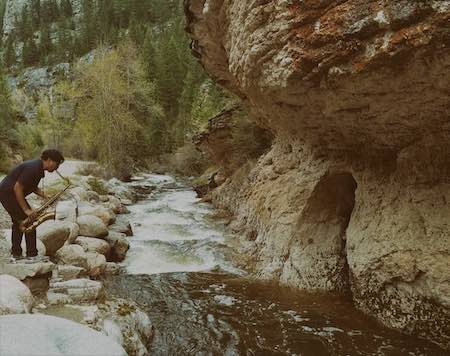
Jon Irabagon plays in the Falling Rock Canyon of South Dakota.
(Photo: Talia Irabagon)In the pantheon of performers on unaccompanied saxophone, Jon Irabagon has a powerful claim to membership — one based on recorded solo turns on sopranino for 2015’s Inaction Is An Action and mezzo soprano for 2019’s Invisible Horizon (both on his own Irabbagast Records) as well as live sets at more than half a dozen New York venues.
Irabagon, now 42, is adding to that body of work with two solo-tenor projects: an album recorded in the wild and a documentary produced in a black-box performance space. Together, the projects — Bird With Streams and Legacy, respectively — contribute to a kaleidoscopic picture of an acclaimed improviser working in the riskier reaches of his craft.
On the surface, the projects seem to share little apart from Irabagon’s solo saxophone. The album, which landed in July, is a low-fi exercise recorded by Irabagon who, upon decamping to South Dakota during the pandemic’s 2020 peak, grabbed a microphone, a pad, his tenor and little else before embarking on what became eight months of daily exploration in Falling Rock, a canyon amid the Black Hills.
By contrast, the documentary, streaming in October, is a high-gloss affair. Filmed over four, 15-hour days in April — six months after Irabagon left the canyon — it finds him operating under controlled conditions in Ohio’s Columbus Dance Theater, surrounded by lighting experts, sound designers and make-up stylists.
The projects draw on different material. The album, on Irabbagast, features the music of Charlie Parker. The film, produced by the nonprofit A Tribe for Jazz, features Irabagon’s tunes.
The approaches also differ. “In the Black Hills,” Irabagon explained in an August Zoom call, “it was about my being as expansive as possible: turning every stone over, thinking of every possibility and trying to get there through my horn. The Legacy project was more about a distillation — from the Black Hills to the black box to the black hole — being as compact as possible, just trying to get to the essence of each tune.”
Ultimately, he added, “the projects are the flip side of the same coin. They both boil down to me trying to be as expressive as possible on the solo instrument.”
On Bird With Streams, he delivers some wicked bebop-inflected blowing on tunes like “Sippin’ At Bells.” Elsewhere, he mines his considerable bag of technical tricks: flutter-tonguing with key slaps on “Mohawk,” buzzing like a trumpeter into his mouthpiece on “Anthropology,” sucking air through his horn on “Moose The Mooche” (an attempt, to mimic the windstorms in the canyon).
In real time, he plays with and against the canyon’s ambient sounds. But he was not averse to advancing a narrative in post-production. On the closer, “Quasimodo,” his final vamp fades in a rush of water taken from a sound sample. The intent, he said with a smile, was to evoke a legendary flash flood from a purportedly haunted creek in the canyon — a bit of offbeat humor, perhaps, but that fits Irabagon’s aesthetic.
Legacy, at 40 minutes in length, presents deeply felt re-imaginings of tunes from past albums, opening with a doleful “Dark Horizon.” Bathed in misty-colored light, a wide-brimmed hat casting a shadow on his eyes, Irabagon ratchets down what was a high-flying interpretation of the piece on Invisible Horizon in the pre-pandemic year. In the end, he said, he lands in a “more somber, focused, quieter place.”
“The Music Box Song (For When We’re Apart)” presents Irabagon in a similarly restrained light. Written as a gift for his wife, the tune was first recorded by his quartet on 2015’s Behind The Sky. “With the quartet, it gets to a certain place,” he said. “But the tune is so delicate and melancholy that I felt like it would be perfect for a solo tenor saxophone setting.”
Whatever the mood, Irabagon largely avoids the grand gesture. But the interpretations all have an urgency to them, none moreso than the film’s closer, a new original, “Alliance.” It unites the two tenor projects — bringing the capaciousness of the outdoor experience into the black-box environment in a sweeping but succinct statement hinting at fusion grooves, a samba beat and a mystic ’60s vibe. The statement will be fleshed out in a quartet version next year.
“I want to expand my direction in every way,” he said. DB
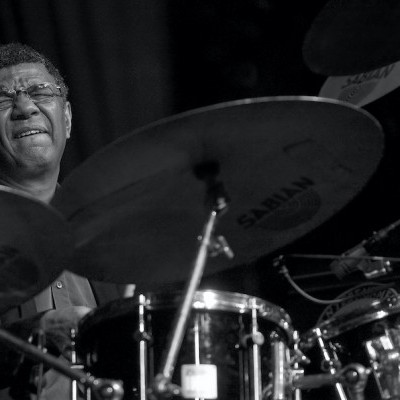
Jack DeJohnette boasted a musical resume that was as long as it was fearsome.
Oct 28, 2025 10:47 AM
Jack DeJohnette, a bold and resourceful drummer and NEA Jazz Master who forged a unique vocabulary on the kit over his…

D’Angelo achieved commercial and critical success experimenting with a fusion of jazz, funk, soul, R&B and hip-hop.
Oct 14, 2025 1:47 PM
D’Angelo, a Grammy-winning R&B and neo-soul singer, guitarist and pianist who exerted a profound influence on 21st…
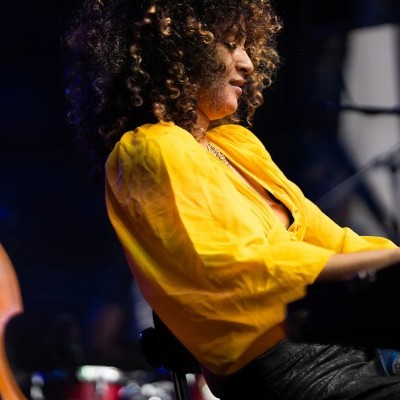
Kandace Springs channeled Shirley Horn’s deliberate phrasing and sublime self-accompaniment during her set at this year’s Pittsburgh International Jazz Festival.
Sep 30, 2025 12:28 PM
Janis Burley, the Pittsburgh International Jazz Festival’s founder and artistic director, did not, as might be…
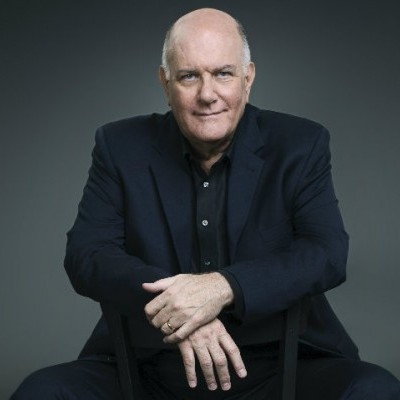
Jim McNeely’s singular body of work had a profound and lasting influence on many of today’s top jazz composers in the U.S. and in Europe.
Oct 7, 2025 3:40 PM
Pianist Jim McNeely, one of the most distinguished large ensemble jazz composers of his generation, died Sept. 26 at…
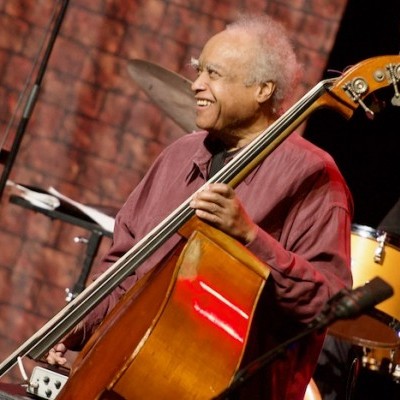
Drummond was cherished by generations of mainstream jazz listeners and bandleaders for his authoritative tonal presence, a defining quality of his style most apparent when he played his instrument unamplified.
Nov 4, 2025 11:39 AM
Ray Drummond, a first-call bassist who appeared on hundreds of albums as a sideman for some of the top names in jazz…